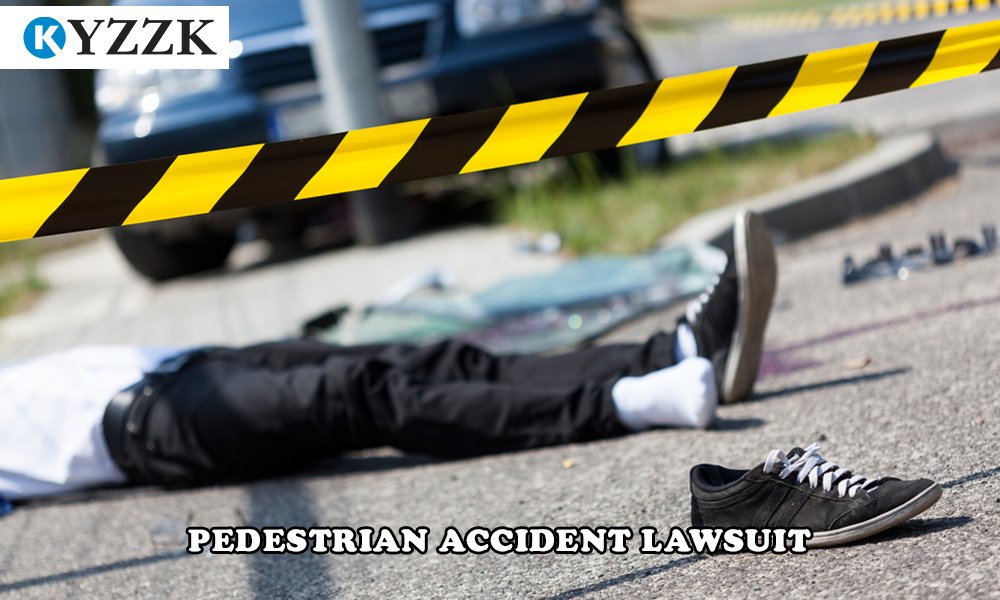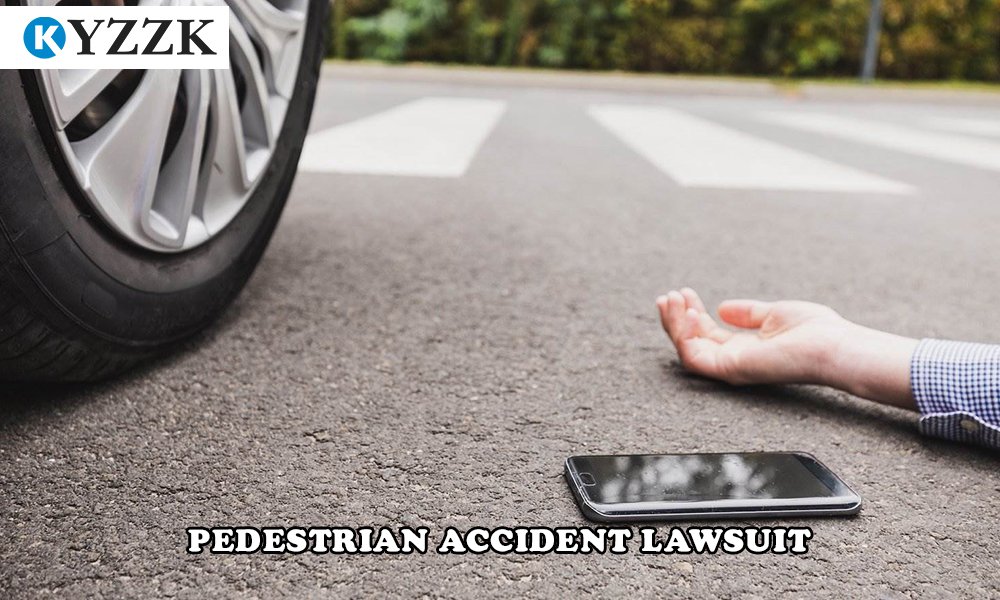Pedestrian Accident Lawsuit Navigating the Legal Maze
Pedestrian Accident Lawsuit Navigating the Legal Maze, In an era where bustling city life and congested traffic are the norm, pedestrian accidents have become a pressing concern. This article delves into the intricacies of pedestrian accident lawsuits, shedding light on the legal aspects, causes, and preventive measures.
I. Causes of Pedestrian Accidents
A. Distracted Driving
The ubiquity of smartphones has contributed to a surge in distracted driving incidents, posing a significant risk to pedestrians.
B. Speeding and Reckless Driving
Excessive speeds and reckless maneuvers by drivers amplify the likelihood of pedestrian accidents, making this a crucial aspect to explore.
C. Poor Infrastructure
Inadequate pedestrian infrastructure, such as poorly marked crosswalks or lack of traffic signals, can elevate the risk of accidents.
D. Weather Conditions
Adverse weather conditions, including rain or snow, can create hazardous conditions for both drivers and pedestrians.
II. Legal Aspects of Pedestrian Accident Lawsuits

A. Duty of Care
Drivers have a legal obligation to exercise reasonable care while operating a vehicle to prevent harm to pedestrians.
B. Negligence
Proving negligence is pivotal in pedestrian accident cases, highlighting the importance of establishing the responsible party’s failure to meet the duty of care.
C. Gathering Evidence
Accurate documentation of the accident scene, including photos and witness statements, is crucial in building a strong case.
D. Importance of Eyewitnesses
Eyewitness accounts often play a pivotal role in corroborating facts and establishing the sequence of events.
III. Steps to Take After a Pedestrian Accident
A. Seeking Medical Attention
Immediate medical attention is paramount, ensuring that injuries are addressed promptly and documented for legal purposes.
B. Contacting Law Enforcement
Reporting the accident to the police ensures an official record, facilitating the subsequent legal proceedings.
C. Documenting the Scene
Detailed documentation of the accident scene helps in reconstructing events and determining liability.
D. Seeking Legal Representation
Consulting with a pedestrian accident attorney is crucial for navigating the legal complexities and advocating for the victim’s rights.
IV. Challenges in Pedestrian Accident Lawsuits
A. Determining Fault
Pinpointing fault can be challenging, especially in situations with shared responsibility.
B. Insurance Hurdles
Negotiating with insurance companies for fair compensation can be an uphill battle for victims.
C. Recovering Damages
The process of seeking and recovering damages involves various legal intricacies, adding complexity to the lawsuit.
V. Settlement vs. Going to Court
A. Pros and Cons of Settlements
Settlements offer expedited resolution but may not always provide the deserved compensation, contrasting with the potentially lengthy court proceedings.
- Litigation Process
Opting for litigation involves a formal legal process, including discovery, hearings, and potentially a trial.
VI. Recent Legal Developments
A. Case Studies
Examining recent case studies provides insights into legal precedents and their impact on current litigation trends.
B. Precedents and Their Impact
Legal precedents influence the outcomes of future cases, shaping the landscape of pedestrian accident lawsuits.
VII. Importance of Legal Assistance
A. Role of a Pedestrian Accident Attorney
Attorneys specializing in pedestrian accidents play a pivotal role in advocating for victims’ rights, navigating the legal maze on their behalf.
B. Advocating for Victims’ Rights
Legal professionals champion the cause of victims, ensuring they receive fair compensation for their injuries and losses.
VIII. Public Awareness and Safety Measures
A. Community Initiatives
Community-driven initiatives raise awareness about pedestrian safety, emphasizing the collective responsibility to ensure safe streets.
B. Educating Drivers and Pedestrians
Education campaigns targeting both drivers and pedestrians contribute to a safer coexistence on the road.
C. Governmental Responsibilities
Governments play a crucial role in enhancing pedestrian safety through improved infrastructure, regulations, and law enforcement.
XI. The Role of Technology in Pedestrian Safety
Advancements in technology, such as pedestrian detection systems in vehicles and smart crosswalks, are playing a pivotal role in preventing accidents and enhancing pedestrian safety.
A. Pedestrian Detection Systems
Modern vehicles are equipped with advanced sensor technologies that can detect pedestrians in proximity, alerting drivers and even applying emergency braking if necessary.
B. Smart Crosswalks
Innovative crosswalks incorporate technology to enhance visibility, with features like LED lights or sensors that alert drivers when pedestrians are crossing.
X. Emotional Toll on Pedestrian Accident Victims
The aftermath of a pedestrian accident extends beyond physical injuries, delving into the emotional toll on victims. Understanding and addressing these psychological impacts is crucial for comprehensive recovery.
A. Post-Traumatic Stress Disorder (PTSD)
Pedestrian accident survivors may experience PTSD, manifesting as anxiety, nightmares, and flashbacks related to the traumatic incident.
B. Depression and Anxiety
Dealing with the aftermath of an accident can lead to depression and anxiety, affecting the overall well-being of the victim.
XI. Legal Trends: A Global Perspective

Exploring how different countries approach pedestrian accident lawsuits provides valuable insights into evolving legal trends and the varying levels of protection afforded to pedestrians worldwide.
A. Strict Liability Laws
Some countries implement strict liability laws, holding drivers automatically responsible for pedestrian accidents, which can simplify legal proceedings.
B. Compensation Structures
Analyzing compensation structures in different jurisdictions sheds light on the varied approaches to addressing the financial needs of pedestrian accident victims.
XII. Grassroots Advocacy: Empowering Communities
Community-led efforts, including support groups and awareness campaigns, empower victims and their families, fostering resilience and creating a network of solidarity.
A. Support Groups
Connecting with others who have experienced similar challenges provides emotional support and a platform to share insights on navigating the recovery process.
B. Awareness Campaigns
Grassroots campaigns educate the public about pedestrian safety, influencing behavior and contributing to a culture of responsibility on the road.
XIII. Future Trends: The Road Ahead
Examining emerging trends in pedestrian safety and legal advocacy offers a glimpse into the future, where technology, legislation, and community engagement converge to create safer environments for pedestrians.
A. Autonomous Vehicles
The rise of autonomous vehicles presents opportunities and challenges for pedestrian safety, requiring innovative solutions and regulatory frameworks.
B. Global Collaborations
Collaborative efforts between countries and organizations aim to establish global standards for pedestrian safety, fostering a collective commitment to reducing accidents.
XIV. The Human Element: Raising Driver and Pedestrian Awareness
Acknowledging the human element in pedestrian safety is crucial. Education campaigns targeted at both drivers and pedestrians play a vital role in fostering mutual understanding and promoting responsible behavior on the road.
A. Driver Education
Educating drivers about the vulnerability of pedestrians, the importance of adhering to speed limits, and avoiding distractions contributes to a safer road environment.
B. Pedestrian Education
Pedestrians also play a role in their safety. Understanding the significance of using designated crosswalks, obeying traffic signals, and staying vigilant can prevent accidents.
XV. Legal Rights and Responsibilities
Understanding the legal rights and responsibilities of both pedestrians and drivers is fundamental in preventing accidents and establishing accountability.
A. Pedestrian Rights
Pedestrians have the right of way in designated areas, and drivers must yield to them. Knowing these rights empowers pedestrians to navigate traffic safely.
B. Driver Responsibilities
Drivers are responsible for exercising due care, obeying traffic laws, and being vigilant for pedestrians. Awareness of these responsibilities can prevent accidents and legal consequences.
XVI. The Economic Impact of Pedestrian Accidents
Beyond the physical and emotional toll, pedestrian accidents have significant economic ramifications, affecting individuals, communities, and healthcare systems.
A. Medical Costs
The medical costs associated with treating pedestrian injuries, including emergency care, surgeries, and rehabilitation, can be substantial.
B. Productivity Loss
For those injured in pedestrian accidents, the potential loss of income due to injuries or the need for extended recovery time poses economic challenges.
XVII. Environmental Considerations in Pedestrian Safety
Promoting pedestrian-friendly urban environments not only enhances safety but also contributes to sustainable and eco-friendly communities.
A. Urban Planning
Cities and towns adopting pedestrian-friendly urban planning, including wider sidewalks and green spaces, create a more inviting and safe atmosphere for pedestrians.
B. Reducing Carbon Footprint
Encouraging walking as a mode of transportation contributes to reducing carbon emissions, aligning with global efforts towards environmental sustainability.
XVIII. The Importance of Continuous Advocacy
Sustained advocacy efforts are crucial in keeping pedestrian safety on the forefront of public awareness, encouraging ongoing improvements in legislation, infrastructure, and societal attitudes.
A. Policy Advocacy
Advocating for policies that prioritize pedestrian safety, such as enhanced crosswalks, traffic calming measures, and stricter enforcement, can lead to lasting change.
B. Community Engagement
Active involvement in community initiatives ensures that pedestrian safety remains a priority, fostering a collective commitment to creating safer public spaces.
Frequently Asked Questions (FAQs)
- What are the legal rights of pedestrians in a crosswalk?
Pedestrians have the right of way in designated crosswalks, and drivers must yield to them. Understanding these rights is crucial for both pedestrians and drivers. - How can communities promote pedestrian-friendly environments?
Communities can promote pedestrian-friendly environments through urban planning that includes wider sidewalks, green spaces, and measures to calm traffic. - What economic impacts do pedestrian accidents have?
Pedestrian accidents can lead to significant medical costs, productivity loss, and economic challenges for individuals and communities.
How can individuals contribute to continuous advocacy for pedestrian safety?
Individuals can contribute by staying informed, participating in community initiatives, and advocating for policies that prioritize pedestrian safety.

